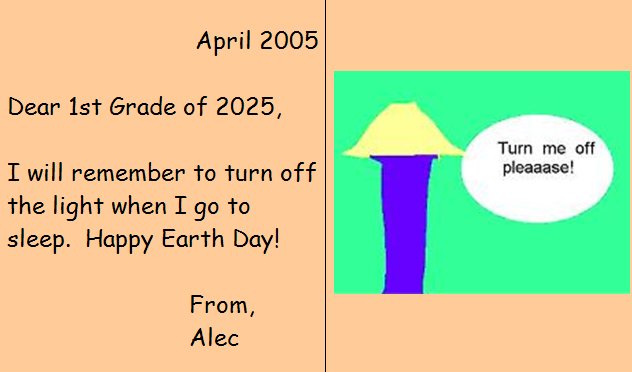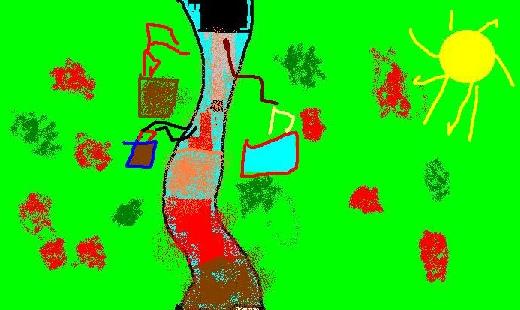|
Mrs. McGowan's First
Grade Class |
|
Our project in a nutshell: after reading
lots of springtime and environmental themed stories, the children
wrote something they can do right now to make a difference in
keeping the earth clean and safe for living things. They wrote this
in the traditional way (paper/pencil) and created a Readers Theater
script from this work. We read the script to two other classes on
Earth Day.
Then, in response to Lynne Cherry's book, The River Ran Wild, An Environmental History, the children used their ideas to create "postcards" for a class of firstgraders who will be in school twenty years from now. This activity focused on doing something practical right now to help the earth while thinking about who might benefit in future years - other children, maybe even their own. They typed their postcards in a wordprocessing program (MS Word), using a teacher-made template. Then they created graphic images in PAINT to use as pictures on the cards. Postcards to the Class of 2025 ... We're Making A Difference
Students created pictures to show the story elements (beginning, middle, end) in The River Ran Wild
In the 1960's laws were changed, dumping stopped, and people helped clean up the river. Now it is clean and a home to fish again.
Here's a pretty spring flower that Jessica made in PAINT You can see all the Earth Day Postcards at my webpage. New Jersey Core Curriculum Standards: Language and Literacy Social Studies 6.9 acquire geographical understanding by studying the environment and society. Science National Educational Technology Standards for
Students. (NETS) |

© Susan Silverman & Linda
Brandon - Beautiful Spring, Beautiful Earth 2005


